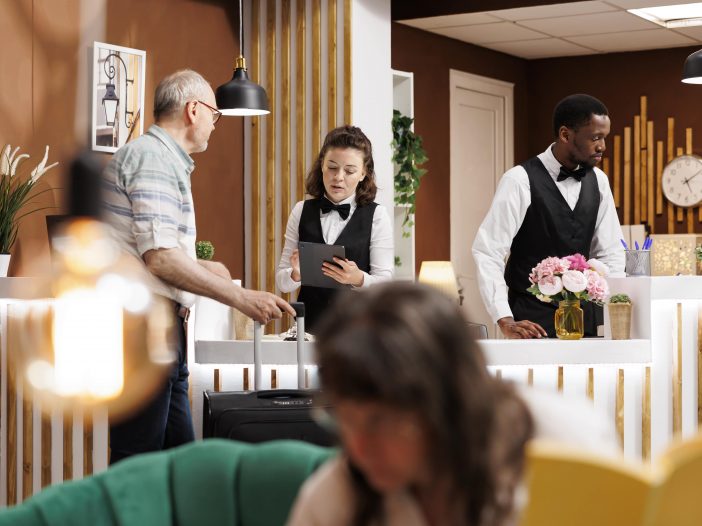
Fancy restaurants are in a tough spot. Sure, they charge high prices, but that doesn’t guarantee profit. Every detail costs money, and staying profitable takes more than a good menu. They have to work hard to cover costs, keep customers returning, and adapt when the economy shifts. Here’s a fact-checked breakdown of the real strategies they use to stay open—and how they survive in an industry where many fail.
1. Elevating the Dining Experience
It’s no accident that a high-end restaurant feels different from a typical spot. Fancy places invest big in atmosphere to make every visit memorable.

- Ambience: From curated lighting to handpicked decor, it’s all planned to create a mood that feels special.
- Live Demonstrations: Some restaurants offer chef’s tables or open kitchens, where you can watch your meal being prepared. People pay more for this kind of exclusive experience.
- Personalized Service: High-end spots train staff to remember regulars’ preferences, offer suggestions, and even customize dishes based on past orders.
Fancy restaurants know that creating an unforgettable atmosphere isn’t cheap, but it builds a loyal clientele willing to pay for more than just the food.
2. Relying on Technology for Efficiency
Fancy doesn’t mean old-school. Upscale places use advanced tech to improve everything from reservations to food tracking.
- Online Reservations: Platforms like OpenTable allow restaurants to manage seating, helping them avoid double bookings and track customer preferences.
- Customer Tracking: Many upscale spots use customer management software that tracks dietary preferences, favorite dishes, and special occasions.
- Efficient Payment Systems: Contactless payments mean less wait time, which lets staff focus on service quality rather than transaction management.
Tech gives these restaurants control over service, making each visit smoother for guests and more profitable for the business.
3. Boosting Revenue with Side Streams
Successful fancy restaurants don’t rely solely on dining revenue. They diversify to make up for any slow days.
- Retail Items: Think branded wine glasses, signature sauces, or cookbooks. It’s a small but effective revenue stream.
- Events and Catering: Catering for weddings, conferences, and private parties can be highly profitable. Many restaurants now offer event spaces or private dining areas for this exact reason.
- Special Classes: High-end spots offer cooking classes, wine tastings, or chef-led events, which bring in additional revenue and build the brand’s reputation.
Revenue diversity keeps these restaurants going, balancing out seasonal slowdowns and bringing in income even when tables aren’t full.
4. Focusing on Sustainability
Sustainable practices do two things: they lower costs and appeal to eco-conscious diners.
- Local Ingredients: Many high-end restaurants source locally, which saves on shipping costs and ensures fresher ingredients.
- Waste Reduction: Zero-waste kitchens use as much of each ingredient as possible, which cuts down on costs and makes for creative dishes.
- Energy Efficiency: From efficient lighting to green cooking equipment, saving energy helps cut utility bills.
These choices don’t just make customers feel good—they have real financial benefits that help restaurants survive.
5. Membership Programs for Loyalty
Membership programs are a simple way to keep regulars coming back, making loyalty feel like a privilege.
- Exclusive Perks: VIP customers often get priority reservations, special events, and early access to new menus.
- Personalized Offers: Members get offers on birthdays, anniversaries, or after a few months away, creating a personal touch that keeps them coming back.
- Discounted Events: Members may receive discounts on exclusive events, tastings, or cooking classes, encouraging them to stay engaged with the restaurant.
Loyalty programs help create recurring revenue, giving restaurants more financial stability.
6. Adapting to the Economy
When times get tough, fancy restaurants adapt to keep things running.
- Adjusting Menu Items: Instead of hiking prices, restaurants will often swap pricey ingredients with more affordable alternatives.
- Promotions During Slow Periods: Specials during off-hours, like happy hours or tasting menus, draw in customers when business is slow.
- Simplified Menus: Reducing menu size cuts food waste and lowers ingredient costs without sacrificing quality.
Economic shifts hit restaurants hard, but by keeping menus flexible and offering promotions, they manage to weather financial challenges.
7. Investing in Great Service
Good service isn’t optional. High-end places know it’s what keeps people coming back.
- Extensive Staff Training: Staff are trained to know the menu, recommend dishes, and even anticipate customer needs.
- Recovery Protocols: When things go wrong, high-end spots know how to make it right. From comping a dish to a genuine apology, they make sure customers leave satisfied.
Service is often the reason people choose high-end dining, so fancy restaurants prioritize it to keep customers loyal.
Final Thoughts
Fancy restaurants have to juggle a lot to stay open—quality food, a unique atmosphere, and exceptional service, all while managing costs. By adding revenue streams, investing in service, and adapting to economic shifts, they make it work. In an industry where many fail, their survival relies on more than great food; it’s a mix of smart strategies and exceptional execution.
Want more insights into the restaurant business and hospitality industry? Check out our articles at Laparizone for the latest trends, tips, and more.









